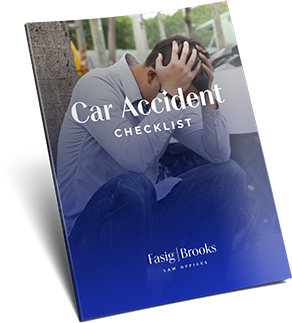Many clients who are injured due to a fall on a property owner’s premises, such as a commercial establishment open to the public, are under the impression that just because an accident occurred on the owner’s property, the property owner is 100% at fault. Under Florida law, however, a property owner is not automatically liable for damages associated with an injury that occurred on its premises – even if the injured party is not in any way at fault for the injuries they occurred – as it must essentially be proven that the owner’s negligent actions, or inactions, had a role in causing the accident at issue. Conversely, and equally surprising to many, someone injured in a fall is not automatically barred from recovering any damages for their injuries if they, themselves, are partially at fault for their own fall.
Florida adopted and codified the concept of “comparative fault” in section 768.81, of the Florida Statutes. Under this doctrine, the jury is charged with determining fault among the plaintiff, the defendant, and others who may not even be parties to the lawsuit, but whose actions may have caused or contributed to the accident’s occurrence. Until 1973, Florida applied the law of contributory fault in all negligence cases. Under this concept, an injured party was barred from receiving any recovery if it was determined that he or she was at fault for their accident in any way — even if a jury attributed them with only 1% of the total fault.
A simple example may help illustrate how the comparative fault doctrine is applied in a premises liability case: Assume someone is badly injured after tripping on a large crack in a parking lot while walking to the landowner’s store. The injured party may be a bit embarrassed about the fact that they, for whatever reason, could not avoid the fall. Perhaps they have been to this store before and were able to successfully navigate the area without issue on prior trips. Perhaps they were wearing shoes that made them more susceptible to falling. Perhaps you were looking at your cell phone while walking before you fell. As you can imagine, there are many factors that may ultimately contribute to such an unfortunate accident occurring. However, perhaps the landowner knew of the potentially dangerous condition and took no actions to remedy the problem. Perhaps the lighting in the area was less than adequate. Perhaps there is shared liability for the fall. The comparative fault doctrine allows a jury to consider all factors related to a party’s potential liability for an accident, without foreclosing an injured party’s right to a recovery simply because the party was, to some degree, responsible for their injuries.
Under Florida’s comparative fault laws, the amount of money damages an injured party is entitled to receive will be reduced by the degree to which they are, themselves, at fault. So, assume the jury finds that an injured party is 25 percent to blame for their slip-and-fall accident and finds that the property owner is 75 percent liable. They also find that the injured party sustained damages (such as medical bills, lost income, and their pain and suffering) total $100,000. A verdict in the amount of $75,000 will then be entered against the property owner, in favor of the injured party (the total $100,000 in damages with 25 percent of the total value subtracted due to the finding of comparative fault on behalf of the injured party).
Even if your case does not proceed to trial — even if a lawsuit is not actually filed — Florida’s comparative negligence laws will play a significant factor when assessing any premises liability claim in Florida. If you or a loved one has been injured as the result of slip and fall accident, please don’t try to navigate the process on your own. Our attorneys at Fasig & Brooks are available to talk to you at any time of the day or night, every day of the week.





